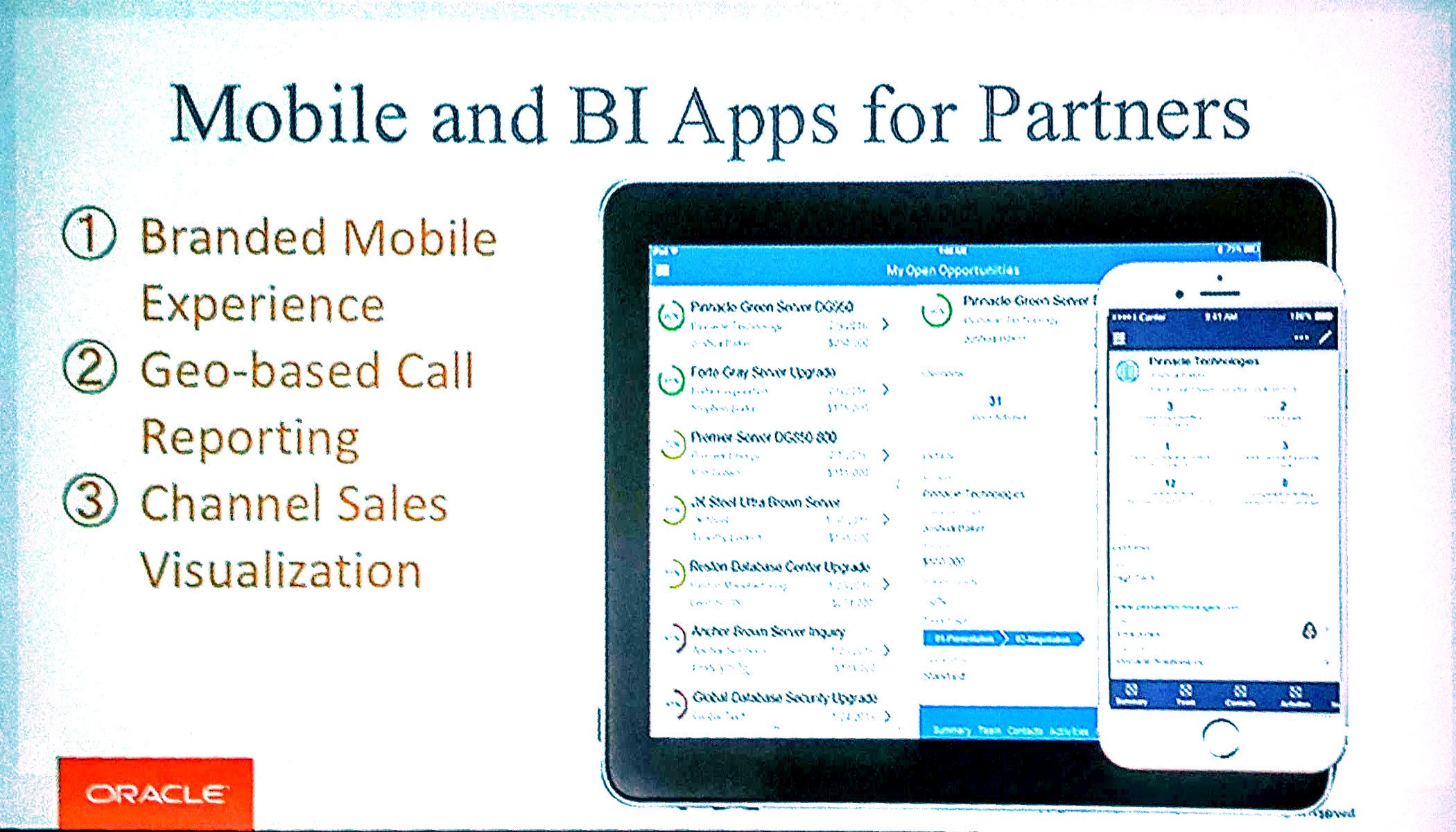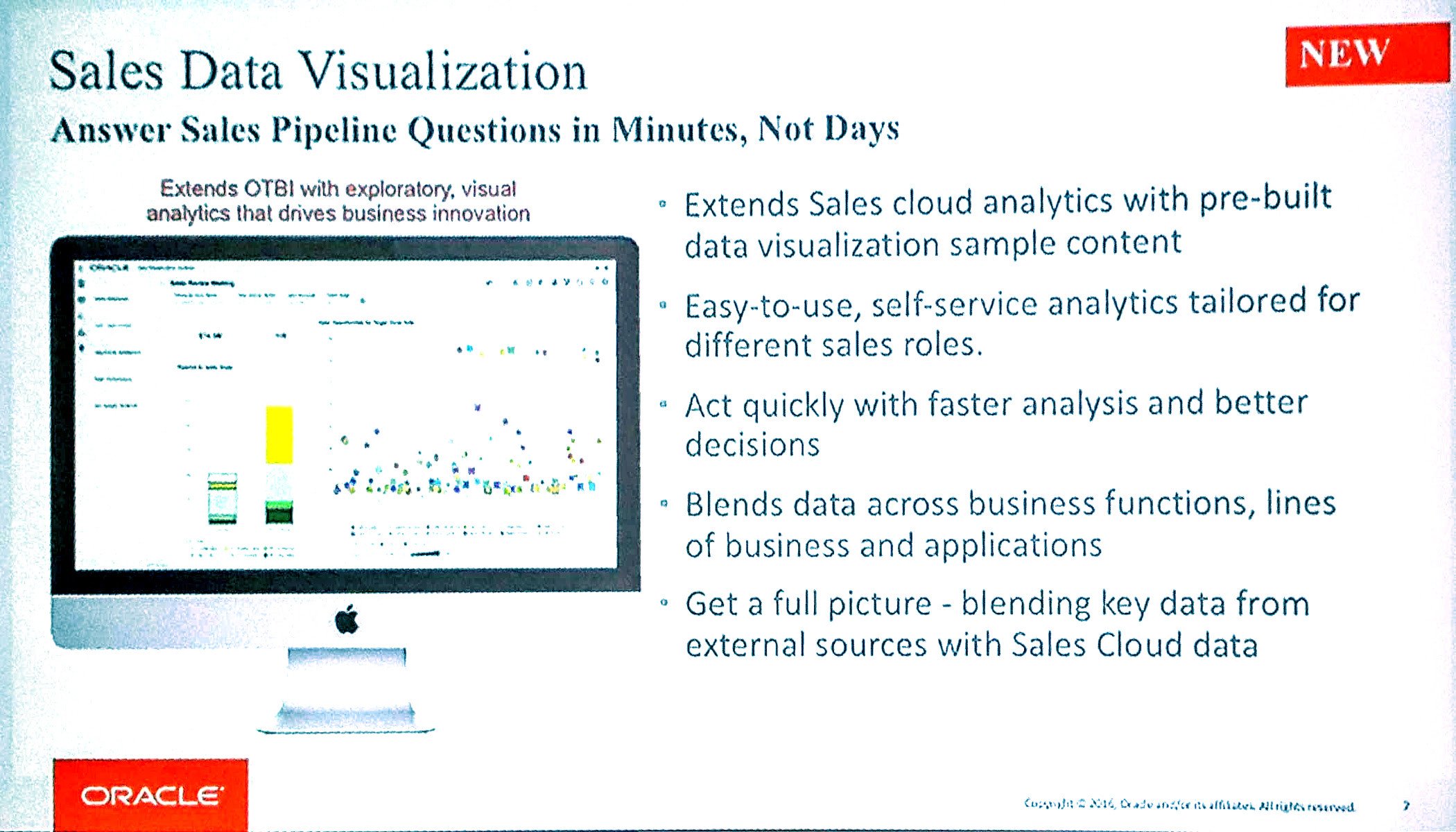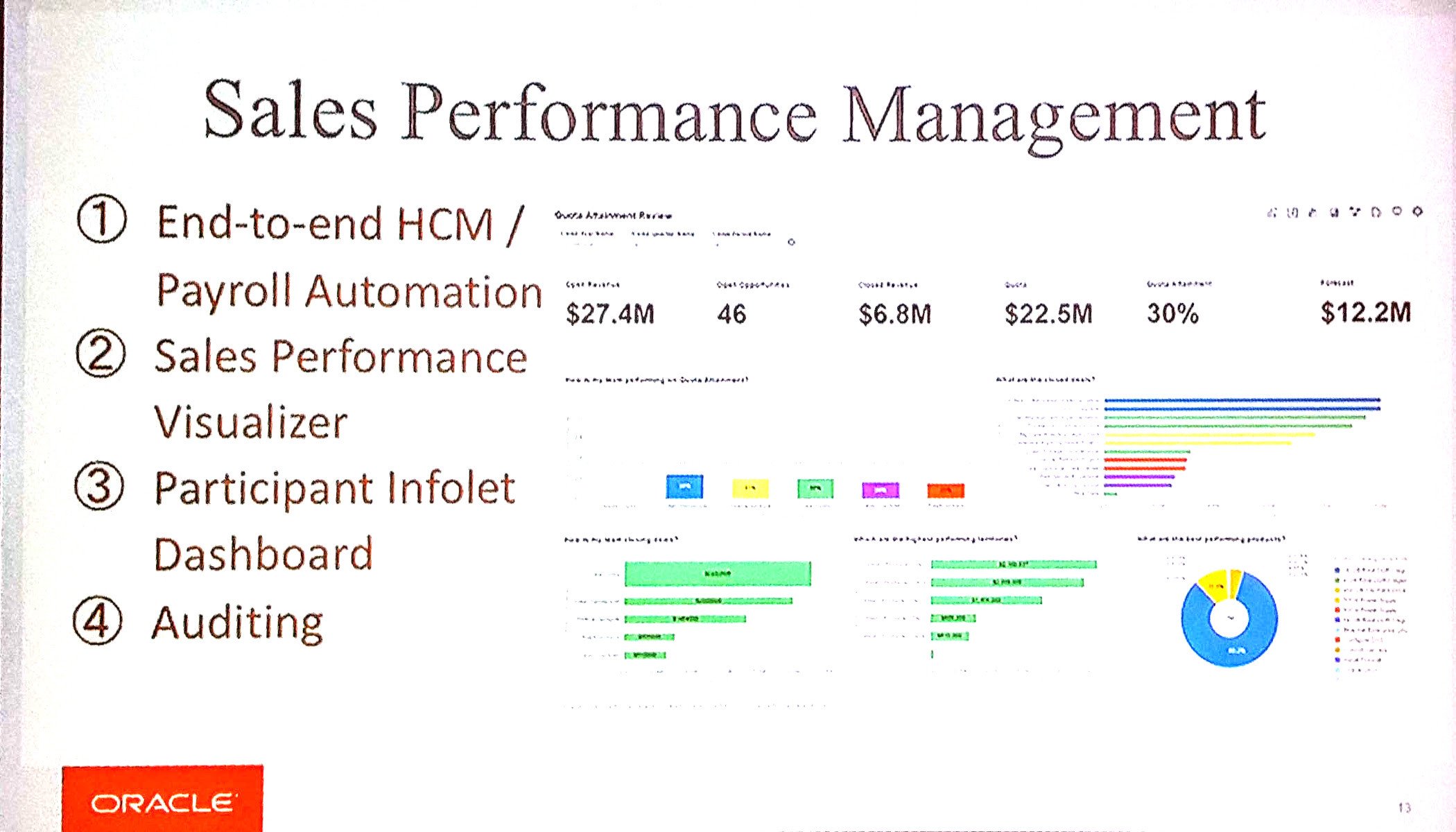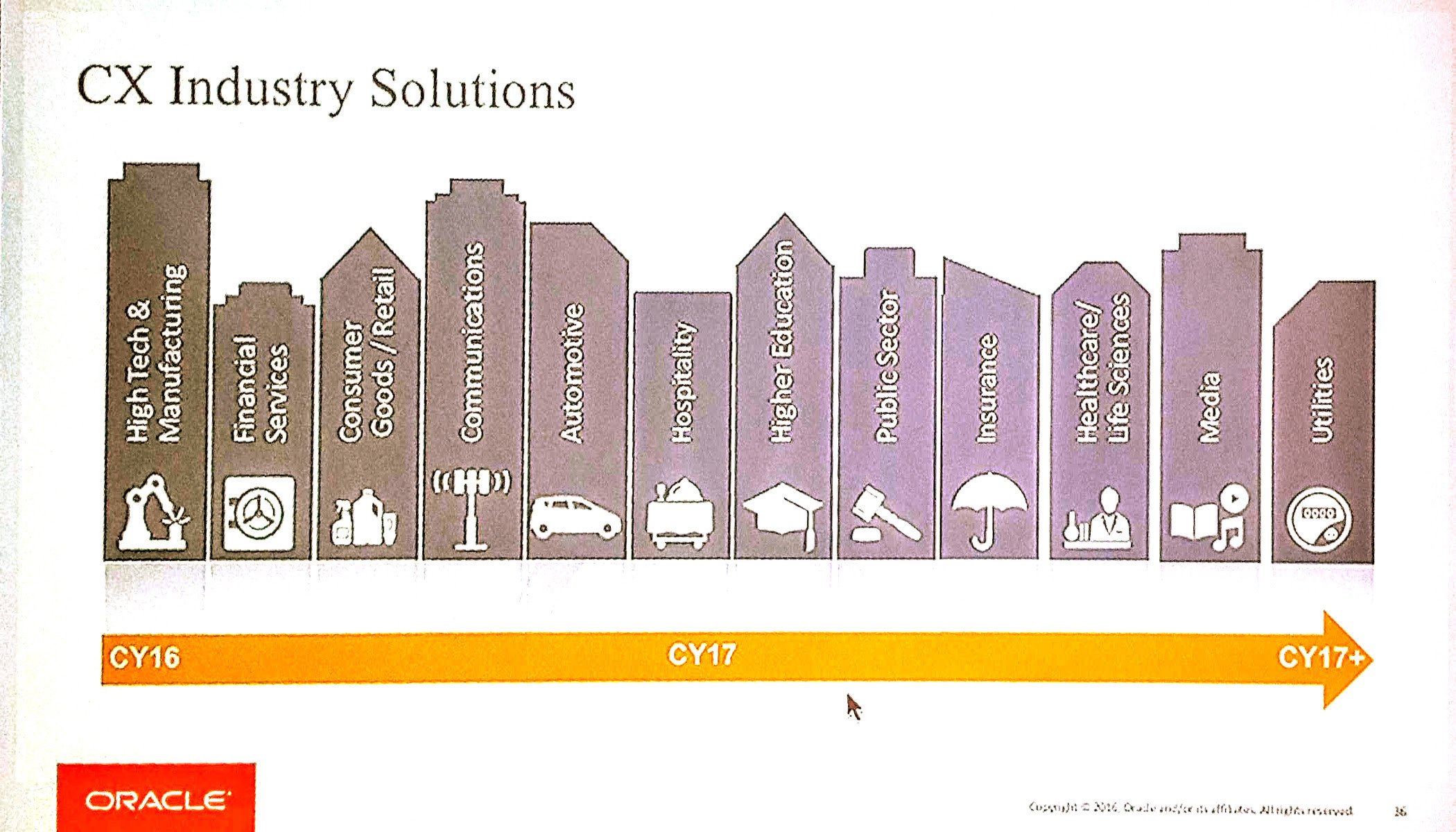Past Event: Mar 20, 2025
We are official exhibitors at Oracle CloudWorld Tour London
Join us to experience the future of AI and Cloud!
2 min read

Author: Luis Figueira
6 min read
One of the key reasons for attending OpenWorld is always the roadmap sessions and catching up with product management for questions and deeper insights. The Oracle Sales Cloud team have not disappointed in 2016.
Following the common strategy of mobile first, let's start with the mobile app; or the new enterprise mobile app as it is known. Up until this point, Oracle released a number of single-task mobile apps, both for direct and indirect (channel/partner) sales. In R12, all of these will be incorporated into a single enterprise mobile app. Alongside this new mobile app, a new mobile application composer will give companies greater flexibility in tailoring this app for their own requirements. Offline capability will be there from the start (albeit read-only at first), with offline read-write expected early next year.

A common issue we see in the SFA space is that higher-up in the organisation, usage and adoption of the applications decline. The common scenarios where this happens usually involve sales managers not using the system, because they feel the need to run additional reporting outside of the system. Getting data from other sources and doing deeper analyses is usually perceived as something more easily done outside of their SFA tool.
We believe our clients don't feel that way, potentially because reporting is one area where we usually spend considerable time with them and user adoption is always at the forefront of our project objectives: we believe this to be key for a successful deployment. However, richer visualisation and analytics tools are also coming with R12 and this will make it easier for sales admins to embed analytics content and build dashboards into the Oracle Sales Cloud homepage.
It will also be easier to bring data from different subject areas and perform hierarchical rollups. If you want more information on how to best leverage these tools and combine your Sales Cloud Data with data from external sources, reach out to us. Our dedicated BI experts are available to help.

If we had to single out one area that is really getting us excited about R12, it's PRM. If Sales Managers are difficult to motivate to use SFA applications, they at least work for the company and should have their objectives aligned with those of the company. But Partners are notoriously difficult to motivate not only to share deal information, but also information about the end-customer, especially early on in the deal cycle.
We've seen that offering partners tools like Configure Price Quote (CPQ) can be good to motivate them, because it provides them with much needed tools that they can leverage to make their lives easier, whilst providing crucial business information almost unknowingly. However, how can we get Partners to provide sales and customer information, when most of the time this involves a doubling of effort on their part, because they will have their own internal SFA systems where they already track all of that?
Oracle Sales Cloud R12, and then with R13, is full of PRM-specific improvements: deal registration via the mobile app, branded partner mobile experience, geo-based call reporting, joint partner opportunity activity timeline, etc. All of these features are designed to bring partners to use your Oracle Sales Cloud system because they will see it as making it easier for them to sell your products. Win-win.
But what about your Channel Managers? Do they know who the most valuable partners are and which programs are incentivising partners the right way? It's very likely that 20% of your partners are bringing in 80% of your channel revenue, so knowing who they are is key. Sales Cloud R12 will introduce a wealth of new pre-built reports for Channel Managers to track and manage Marketing Development Funds (MDF), business plans and budgets.
Anyone who's worked with me has probably been witness to my groaning whenever the topic of Outlook (or Notes) integration inadvertently comes up. Not that it's not a good idea: most sales reps manage their interactions from their email clients and I believe software should support users where they need it. This is especially true if it also means that it facilitates information being captured centrally in the company's CRM system and not spread out to individual mailboxes. No; the main reason has been that the user experience is not without it's challenges. Sales reps also tend to want to manage their leads and opportunities using that same client, and I (personally) believe the line should be drawn at basic personal information management.
However, I have to admit at being at awe with the new Outlook 365 solution, born out of a partnership between Oracle and Microsoft. It is truly seamless and makes it incredibly easy to get contact, account and lead information in outlook, at the point of need, with no clunky integrations or background syncs. It actually goes one step further, allowing users to see who in their organisation has interacted with certain accounts, facilitating communications with customers, which is the whole point of something like this. Oracle are definitely on the right track here.
Oracle has one of the most complete SPM solutions (Gartner recognise it as one of the 4 leaders in the SPM magic quadrant). With R12 and R13, most of the improvements and enhancements will be visible on the incentive compensation side of the solution. There will be end-to-end Sales Cloud - HCM/Payroll automation, a sales performance visualizer and auditing among other things.

Sales reps need to present to customers and every company knows how important it is for people communicating to large audiences to have access to material that is branded consistently and delivers the right messages. Sales Lightbox helps sales reps discover presentations, share presentations and create new presentations. It's been present in Sales Cloud since R10, but it has been given an overhaul. Users can use a shopping cart metaphor to pick and choose from existing material (Powerpoint slide decks, images or microsites) and compile a new document on the fly, which they can then edit to their needs.
It is also possible to share material with other users individually or by role (e.g., share a new presentation with all Marketing Managers in one go).
Oracle are continuing to invest in developing industry-specific solutions for Sales Cloud. These include additional objects and flows that are designed to cater to use cases specific to each industry, and may include additional products, such as Oracle Policy Automation for needs analysis in Finance, just to name one example. Here are a few more:
If you are still evaluating Oracle Sales Cloud and fall under any of these industries, give us a call to find out what options you have at your disposal.

These are just a few of the changes coming to R12. Other changes (perhaps less interesting ones for most people) include simplifying the file import wizard, adding REST interfaces for a number of additional objects, improving usability of saved searches by letting users specify visible columns per saved list, simplifying data steward workflows, more matching rules in data quality, finer grain control of scoring algorithms, etc, etc.
As long standing early adopters of Sales Cloud, we are already slotted for upgrade to R12 and have been reviewing the release documentation for a few weeks now. Expect great news soon!
Join us to experience the future of AI and Cloud!
2 min read
Explore how Network Rail provides high-quality information to its customers and users...
3 min read
Learn how Smeg delivers excellent customer service by leveraging Oracle's Generative AI...
3 min read